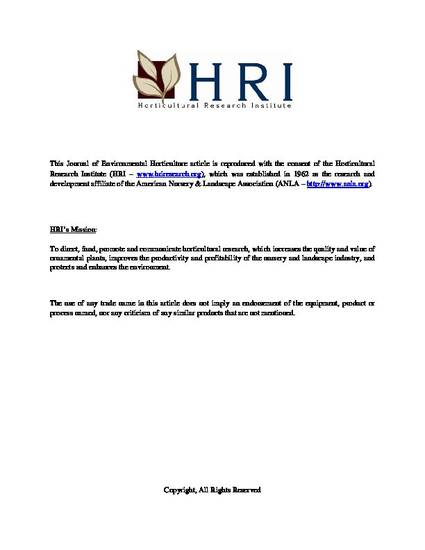
We investigated the effect of irrigation scheduling and tree shelters on survival and growth of nine tree species during first-year establishment in three naturalized Utah landscapes with divergent soil and climate. Seedlings of nine species were planted at high mountain [MTS; 2180 m(7150 ft)], mountain foothils [FTH; 1350 m (4430 ft)], and alkali desert [DES; 1320 m (4330 ft)] sites. Half the trees at each site were enclosed with transluscent plastic shelters after planting, and all tress were irrigated when water loss estimated from local evapotranspiration, depleted plant-available soil water. Tree condition was rated through the growing season, water potential was measured once in late season to assess plant water status, and the number of surviving trees were counted. Despite irrigation, tree condition at the DES and FTH sites declined through the growing season but remained high at the MTN site, resulting in final survival fo 35%, 25%, and 80%, respectively. The effect of shelters on survival was minimal at three sites. At the MTN site, however, sheltered trees were less water stressed despite receiving 60% less water than those without shelters. Protective shelters and irrigationscheduling can benefit tree establishment in a naturalized landscape by reducing water stress provided soil and climate conditions do not inherently limit tree growth.
